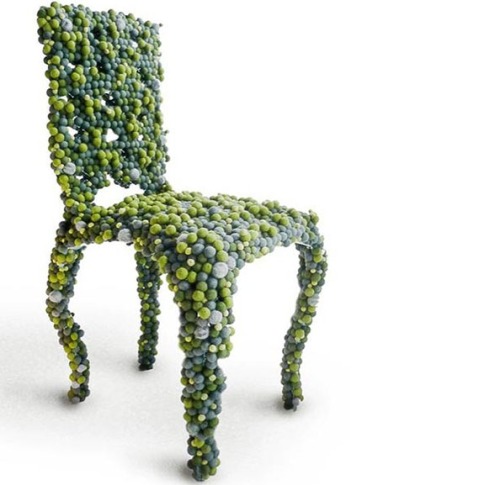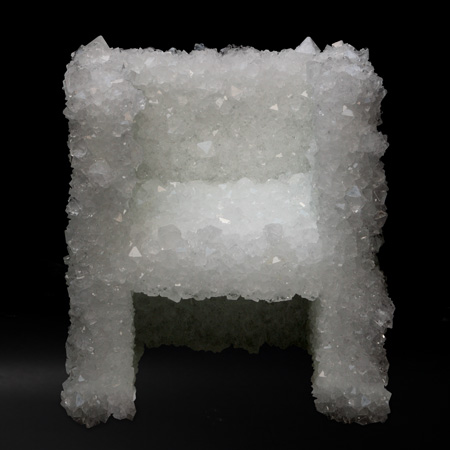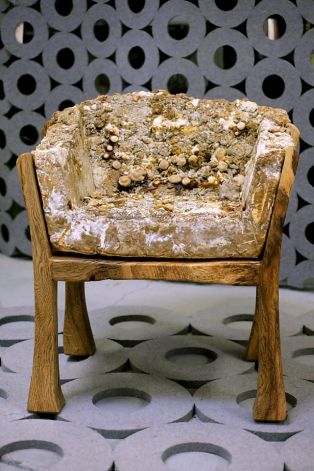 When a furniture designer thinks of a new chair, he or she is likely to consider its looks, size, durability, construction and – above all – comfort. When an artist with a scientific bent tackles the same project – eh, not so much. These three sci-art seats are long on cool but short on comfy.
When a furniture designer thinks of a new chair, he or she is likely to consider its looks, size, durability, construction and – above all – comfort. When an artist with a scientific bent tackles the same project – eh, not so much. These three sci-art seats are long on cool but short on comfy.

Tokujin Yoshioka’s Venus Chair is exhibit A. Yoshioka “built” the chair for an exhibit in 2008, creating a chair-like structure of spongy fiber and submerging it in a tank of water, then “feeding” it with nitrate, sulfate and silica and allowing crystals to grow all over it. The object that resulted was a crystalline throne, fit for an undersea emperor. Yoshioka’s chair was displayed in a tank, so that the crystals could continue to grow throughout the exhibit, but I’m going to guess that even if dry, the Venus Chair would not be a cozy spot to curl up with a book.
The Molecular Chair, (top) by New York-based Italian designer and architect Antonio Pio Saracino, is an exploration of the structural components of matter. The chair represents a vastly blown-up scale model of the molecular “stuff” that makes up furniture. The chair is built on a base of wire mesh and covered with “molecules” of wool felt, a natural, low-tech, and eco-friendly material. It definitely looks like a step up in comfort terms from the crystal chair, and I bet cats would love the little felt balls.
The strangest sci-art chairs I came across were these fungal creations by San Francisco-based artist Phil Ross. That’s right: Ross, a mycologist, creates chairs from mycelium, the tough, branching networks of fungus that generally remain underground. (The part we eat is the fruit)

Says Ross, “It sounds like a joke, right, mushroom furniture, but actually it’s a versatile building material with many attractive qualities.” He notes that mycelium is fire-retardant, compostable, non-toxic, moldable, and a good insulator. (source)
He mixes chunks of the mycelium with sawdust and molds the mixture into seats for wooden stools and chairs. Once the seat has grown, it can be finished with linseed oil and shellac to protect it for use, or allowed to fruit – as an art piece, for display only. Alas, the sofa with built-in snacks is not yet a reality.





